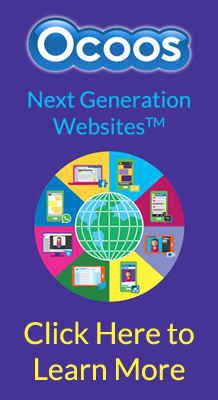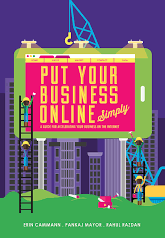7 Ways You Can Reduce Bounce Rate and Increase Conversion
Wannabe bloggers dream of getting scores of
visitors to their sites. But they get a reality check every time they log in to
Google Analytics. The analytics shows them a handful of visits and a high
bounce rate, indicating visitors are not finding the browsing experience
appealing.
In fact, many bloggers jump into the fray without
a fundamental understanding of how the internet really works and how the
mechanisms of the internet intersect with the fundamentals of marketing. The good news is that there are plenty of
resources to gain this understanding. One good one is a free ebook from www.ocoos.com.
Bounce rate and
SEO
Bounce rate is among the key factors that decide
the success and failure of a SEO campaign. A high bounce rate indicates the SEO
efforts that you are putting on the table are not paying off. A low bounce
rate, on the other hand, indicates users are staying on the site for long,
which is good for your site.
Lowering the
bounce rate and increasing the rate of conversion are linked to
each other as the former invites the latter. In this article, I’ll discuss
seven effective ways to reduce bounce
rate and grow conversion rate.
#1. The landing
page
Working on the landing page to make it more
conversion-worthy may sound like the most clichéd advice, but it’s a relevant
advice because the majority of marketers fail to take in what landing pages actually signify. They rush
towards improving the on page experience before understanding the landing page.
See the image below:

The image displays the results of A/B testing.
All the brands whose landing pages were examined are B2C and as the image
shows, the conversion rate ranges between 0.75% and 20%.
A/B testing and similar methods help SEOs
comprehend a landing page’s conversion friendliness. The industry, the niche,
the product and user’s receptivity towards the product are all relevant data
that SEOs need to consider.
A page with prominent CTAs, quality content,
product image and sufficient visual elements can be rebuffed if the product and
the niche have compatibility issues. Similarly, a great product with poor
landing page elements is likely to account for a high bounce rate and an
unimpressive conversion rate.
#2. Keyword
quality
Yesteryear’s SEO didn’t discriminate between
keywords in terms of their quality. But the contemporary SEO practices value keywords
with high-conversion rate more than low-converting keywords. But picking high converting
keywords is not easy. Below you can see the three-tier keyword strategy,
explained by Steven Macdonald:

Note, the third category i.e. Tier 3 keywords are
of low search volume but high converting, which means the only reason such
keywords don’t send traffic to a site is very few people search with them.
Now this is a bit tricky. Tier 3 keywords often
hail from the B2B industry. B2B products/services are purchased by businesses
and not by individuals. Since Tier 3 keywords are high converting as well, they
may be used for B2B campaigns. The strategy here is to get customers from a
small pool of visitors, who’ll buy.
B2C marketers may feel a bit uneasy because B2C
keywords are either high volume and high converting or high volume and low
converting. The first type of keywords are outrageously competitive and the
second type doesn’t lead to a decent ROI. They can try not
Provided keyword ideas as such ideas expand their campaign’s reach.
#3. Deep content
The idea, even though a bit new, has been around for
a while. Experts have endorsed it as a fresh
take on content modeling. There’s something really innovative about deep content. It brings
enterprise content management closer to optimizing a site for search engines.
How it works? You might wonder.
Deep content is responsible for storing and
managing enterprise related and business specific information in a way that
alongside human readers, machine can also understand them. An enterprises can
access those information for internal workflow data
analysis. Since natural language processing (NLP) is in its infancy,
bridging the gap between humans and machine is a colossal task.
Because deep content is a manifestation of the
data-first policy, the meta properties are highlighted and the spiders find it
easy to crawl a site. When deep content is combined with quality content (it
should be used this way), crafted for human readers, the site become optimized
for both humans and machine, thereby leading up to a low bounce rate and an
increased conversion rate.
#4. The F-shaped
pattern
Studies have found that human eyes, when skimming
through website content, read in a strange pattern. See the visual below:

As you can see in the image above, the pattern
resembles the English letter “F.” That’s why it’s called the F-shaped reading
pattern. Apparently unrelated to SEO, this finding is of paramount importance
for SEO.
By following the eye-tracking pattern when
designing the landing page, a marketer can offer visitors a smooth viewing
experience and select the appropriate places
for the CTA buttons. Placing an arrow mark on the top right which points to the left side
follows the natural movement of eyes, according to the picture above.
Placing the product image (not stock, original
photograph) in the middle and the CTA buttons in top-to-bottom manner on the
left side i.e. the tail end of the letter “F” is in sync with the F-shaped
reading pattern. Site visitors are sure to find the layout and the content arrangement
easy-to-navigate, they stay on the site for long and the bounce rate
automatically decreases.
#5. Optimized for
mobile experience
Don’t expect visitors to land from desktop
devices. They may use mobile devices to access your site. If your site is not
optimized for such devices, a poor user-experience will be the outcome, visitor
will leave the site and the bounce rate will go north. You don’t want any of
these to happen, right? Then optimize your
site for Smart devices.
Mobile optimization is no child’s play. It
requires marketers to adopt responsive web design (RWD), which keeps the layout
and navigation items of the site intact irrespective of the device being used.
Mobile users often report broken links, slow loading time, visibility problems
of certain onsite elements, etc. Responsive design can fix everything.
Adaptive web design (AWD) supplements RWD. The difference
between the two is easy to comprehend. While RWD causes multiple changes on the same
layout, AWD creates separate layouts depending on the device specs, especially
the screen size. Use both of them to get the optimal result.
#6. Customer
testimonials
Customers buy from vendors, whom they could
trust. Testimonials from previous or existing customers can persuade new
customers to buy from you. As Ryan Domm-Thomas of CrazyEgg
has put,
customer testimonials make customers promoting you to other customers.
This is the fun part, and if you want to keep the
fun alive, then don’t go for text-based testimonials as they are outdated and
not credible enough. Upload a video which shows a satisfied customer describing
his experience.
Video testimonial best
practices
include telling the truth, be specific when sharing the experience and
mentioning the benefits that the client has received. Videos are the most
favored among all content formats. Hence, using customer testimonial videos
will positively increase the retention rate and decrease the bounce rate.
#Online review
integration
In 2016, online reviews have the power to make or
break a business. Whether you are an online business or function offline,
positive reviews from customers can help you become an industry leader.
Negative reviews can diminish your chances to survive.
A survey
by BrightLocal reveals the power of online reviews. The survey findings show more
than 80% customer read online reviews before deciding on a product. You can
harness the power of online reviews to reduce your bounce rate.
Ask happy customers to give you positive reviews
on third-party sites. Then check for the availability of the APIs of those
sites. In case the APIs are not accessible, take screenshots of favorable
reviews and upload those screenshots on your site’s landing page. This is not
integration in the truest sense, but it works.
Conclusion
Integrating the above suggestions certainly will
help, but perhaps the most important lesson is to have a keen eye on your
intended audience. As the excellent article from Ocoos points out(HERE), the fundamentals of marketing are not
suspended by the technology of the internet.
With the customer in mind, having an experimental
approach while you apply the seven tips shared here. SEO is still an unexplored
territory, and tinkering with the strategies discussed here may create new
marketing avenues. Who knows?


